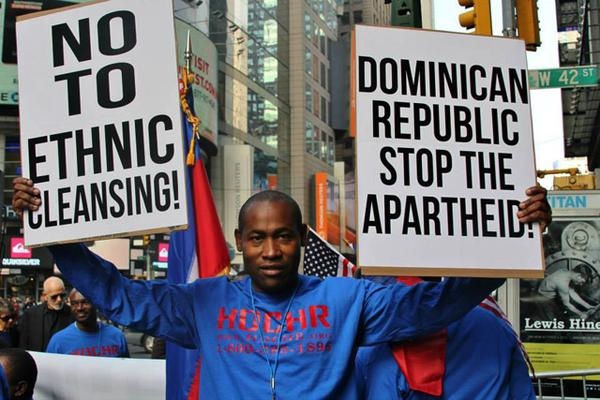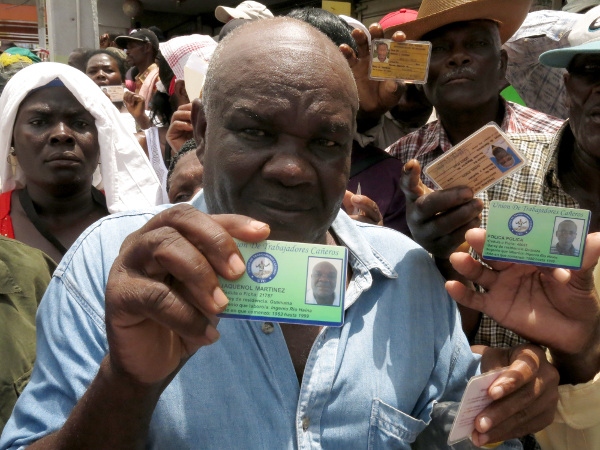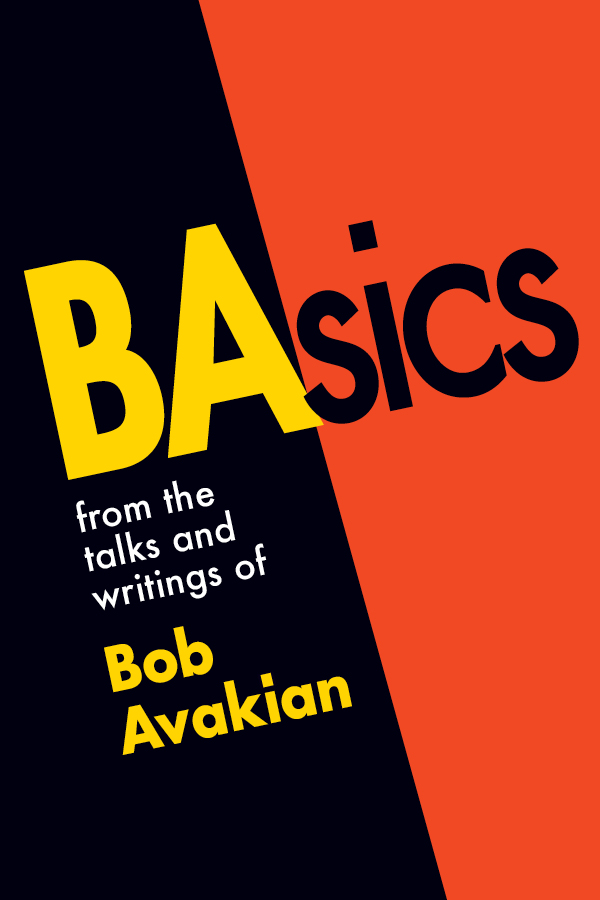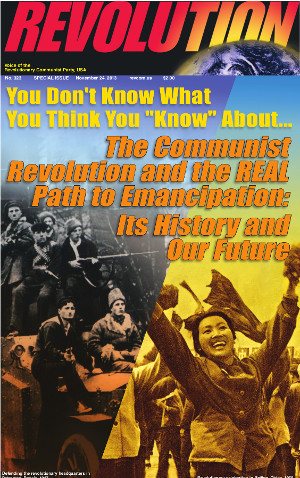Attacks on People of Haitian Descent in the Dominican Republic: Vicious Ethnic Cleansing with U.S. Backing
June 29, 2015 | Revolution Newspaper | revcom.us
A massive and criminal program of ethnic cleansing has been unfolding in the Dominican Republic (the DR) over the past two years, targeting immigrants from Haiti as well as people born in the DR, but of Haitian descent. It has already spread terror and ripped apart the lives of several hundred thousand people, and threatens to unleash far greater horrors. At this point close to 500,000 people are living in fear, either of deportation to Haiti—including tens of thousands who have never even been to Haiti—or of being reduced to “illegal” and “stateless” status while remaining in the DR.
The United States is deeply complicit in this utterly racist crime against humanity.
The Current Crisis

Protest against the Dominican Republic’s threat to deport Haitians. Photo: Twitter
Prior to 2010, anyone born in the Dominican Republic was considered a citizen. But in 2010 the Dominican constitution was changed to exclude anyone whose parents were not citizens, even if they were born in the DR and had lived there their whole life.
Overnight, about 200,000 people—about two percent of the DR’s population—were made non-citizens, instant “illegals” in the land of their birth. And, since they were not born in Haiti and so did not have citizenship there, either, they became “stateless”—people with no legal right to exist anywhere on the planet.
The Dominican government stated that these people, as well as immigrants who were born in Haiti but who may still have been working in the DR for decades—hundreds of thousands of people—could be deported to Haiti. (There are also many thousands of Haitians who work as contract laborers in the cane fields each harvest and are then forcibly trucked back to Haiti when the season ends.) Although there has been back-and-forth by the Dominican government about whether or when mass deportations will begin, there are already reports of immigration sweeps of poor areas in the cities and night raids on houses in the countryside, creating a state of terror where Haitians, people of Haitian descent, and dark-skinned Dominicans are afraid to leave their homes even to go to the store. Military detention centers have been set up along the border to hold people and facilitate deportation. And buses to be used for deportation have been paraded around in the DR.
In response to all this, according to the Haitian government, 14,000 people have already “voluntarily” fled to Haiti. And the threat of far more massive deportations is very, very real.
This kind of large-scale deportation would be outrageous under any circumstances, but is particularly monstrous because much of Haiti was devastated by the 2010 earthquake, and there has been almost no recovery since then. So people are threatened with being forced back to a country in which there are almost no jobs, few social services, and really no way to survive, and where many of them have no friends or family and may not even speak the language.
Junot Díaz, the Pulitizer Prize-winning author who recently returned from the Dominican Republic, where he was born, said that in Santo Domingo, the country’s capital, “There’s a state of terror.” And recently at a program in Miami’s Little Haiti community, he spoke out, along with Haitian writer Edwidge Danticat, criticizing the “elite” Dominican media for fanning anti-Haitian sentiments. Díaz said, “What happens when a government basically green-lights your most primitive, fucked up xenophobia? You can develop a certain response from people over 20, 30 years, and in the Dominican Republic, the history is looong of cultivating this response.” Díaz also said, “The last time something like this happened was Nazi Germany, and yet people are like, shrugging about it.”
Background
The two nations of Haiti and the Dominican Republic share the island of Hispaniola. The whole island was the victim of the savage invasion and conquest by European colonial powers in the 1500s, the genocidal extermination of most of the native peoples, and the imposition of brutal slavery, which was a source of much of the vast wealth that gave life to European capitalism and which destroyed the lives of millions of Africans. Ultimately, the east side of the island was dominated by Spain and the west by France, and so their histories and development diverged into the two countries that now exist. Haiti’s population was heavily of African descent and the people spoke Kreyol and French. In the DR, there was more of a mixture of European, native, and African lineage, and the people spoke Spanish. These ethnic and linguistic differences, a consequence of barbaric European wars of conquest, have since been used by oppressors, both foreign and domestic, to further weaken and divide the people of the island.
Both nations continued to be ravaged, exploited, and repeatedly invaded by the U.S. and other powers, and both have been and remain incredibly poor and oppressed. Both experienced the extreme and pervasive terror of U.S.-backed dictatorships (Trujillo in the DR, the Duvaliers in Haiti) for many decades.

Haitian man, who worked in the Dominican sugar cane fields since 1963, applied for temporary visa. AP photo
But the DR has been the focus of more investment and development, including tourism, manufacturing, and a huge sugar industry. (Much U.S. sugar comes from the DR, and much of the DR sugar industry is owned by U.S. capital.) So the DR has been somewhat less poor, and there are more possibilities for employment. Although many of the jobs available to immigrants there are barely better than slavery, they are still a powerful draw for people in Haiti who have been stalked by outright hunger and, since the earthquake, homelessness.
U.S. and Dominican capitalists squeezed huge profits out of these desperate immigrants for over a century. But Haitians and their descendants have faced not only exploitation, but vicious racism. The Dominican elites promoted the same sick anti-black racism as their colonial masters and their U.S. conquerors, and used it as a way of dividing the oppressed and focusing attention away from their own crimes against the people. Haitians, people of Haitian descent, and even dark-skinned people of Dominican descent have repeatedly been the scapegoats in times of hardship and/or social unrest in the DR, and the general fear and uncertainty have made people even more vulnerable to economic exploitation, willing to accept the most horrible and low-paid work because they had few options and no right to protest or organize.
In 1937, the Trujillo dictatorship unleashed a genocidal campaign, known as “the Perejil massacre.” Perejil is the Spanish word for parsley, and it is difficult for non-native Spanish speakers to pronounce. Trujillo’s troops roamed the countryside demanding that dark-skinned people pronounce it; if they did not do it correctly, they were often killed on the spot. Estimates of the death toll in this massacre are as high as 20,000. This was aimed at driving immigrants out of the country, blaming them for the suffering of the Dominican people, and strengthening the border.
What is happening now is both a continuation of this ugly history, and is evoking that time of fear and horror in a way that increases the terrorization of dark-skinned people in the DR today.
The Role of the U.S.
While there has been significant international condemnation of the Dominican government’s steps towards ethnic cleansing, the U.S. government has been notably silent. The U.S. likes to promote itself as the “defender of human rights” all over the planet (especially in rival powers or other countries that “get in its way” like Russia, China, or Iran). Yet here is an openly racist and cruel program of ethnic cleansing being carried out in a country that is a close ally of the U.S., and a major recipient of U.S. military aid ($358 million since 1946, nearly $8 million in 2010 alone1—and the U.S. is stone silent.
But it is not just silence—the U.S. is actively involved in the Dominican border patrol (known as CESFRONT—Specialized Border Security Corps). According to the Nation:
The enforcement model the Dominican Republic uses to police its boundary with Haiti is an import from the United States. (November 19, 2013)
CESFRONT itself is, in fact, an outgrowth of a U.S. effort to promote “strong borders” abroad as part of its Global War on Terror. So U.S. Consul-General Michael Schimmel told a group from the Columbia Law School Human Rights Clinic in the Dominican Republic back in 2008.... The U.S. military, he added, was training the Dominican border patrol in “professionalism.”
The anti-immigrant practices and outlook in the DR are a direct reflection of the attitudes and policies of the U.S. along its border with Mexico. And the cold-hearted and racist anti-Haitian policy also is a direct reflection of U.S. policy towards Haiti. In the 1980s, when large numbers of Haitians were fleeing poverty and dictatorship, the U.S. incarcerated all the new arrivals at the Krome concentration camp in South Florida. The U.S. also stigmatized Haitians as carriers of the HIV virus. After the 2010 earthquake, as people fled in desperation, the U.S. put five patrol boats in Haitian waters to turn them back and warned that they would not accept any refugees from this humanitarian crisis.
Resistance
It is very important that major cultural figures like authors Junot Díaz (from the DR) and Edwidge Danticat (from Haiti) have teamed up to call out this assault on the people. They have led protests in Miami’s Little Haiti community, and there have also been protests of hundreds in New York City’s Dominican community of Washington Heights. And other public figures, such as the Dominican-American novelist Julia Alvarez, have spoken out, as well. But there is a need for everyone to watch closely, speak out, and protest against this, including speaking out against U.S. complicity.
1. Where Does U.S. Military Aid Go? (PBS, August 30, 2012) [back]
Volunteers Needed... for revcom.us and Revolution
If you like this article, subscribe, donate to and sustain Revolution newspaper.






